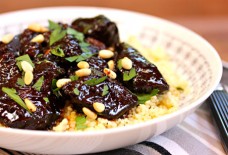Pathbreakers of Arab America—Helen Zughaib
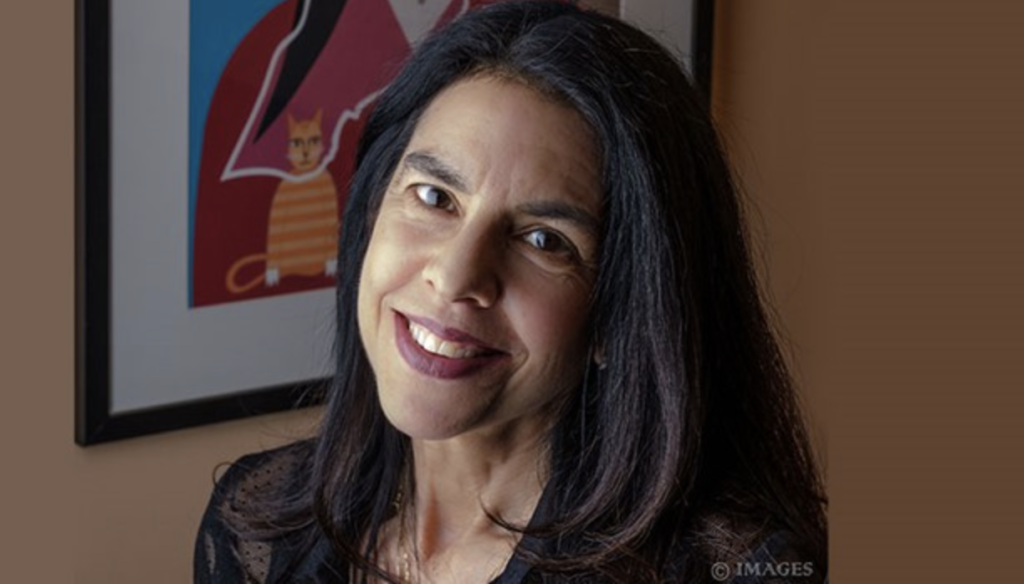
By: John Mason / Arab America Contributing Writer
This is the forty-second of Arab America’s series on American pathbreakers of Arab descent. The series includes personalities from entertainment, business, sports, science, academia, journalism, and politics, among other areas. Our forty-second pathbreaker, Helen Zughaib, a painter and multimedia artist, was born in Beirut, Lebanon, in 1959. She lived mainly in the Middle East and Europe before joining the U.S. to study art at Syracuse University. Zughaib’s work addresses matters of cultural identity, family life, the plight of refugees and displacement in the Middle East, the Arab Spring, and the Lebanese Civil War.
Helen Zughaib an artist who humanizes Middle East politics and war, centering her themes on hopefulness, healing, and spirituality
Helen Zughaib and her family left Lebanon abruptly in 1975 due to the outbreak of the Lebanese Civil War. The family moved to Europe, and as a teenager, Helen attended high school in Paris, followed by studies at Northeast London Polytechnic School of Art. Zughaib then moved to the U. S. to study visual and performing arts at Syracuse University, graduating in 1981 with her bachelor of fine arts. Helen only returned to Lebanon 35 years later.
Zughaib learned to paint in the medium called gouache at Syracuse. Gouache is an opaque watercolor that produces vivid colors with a matte finish. She paints primarily in that genre, using ink on board and canvas. She has recently worked in mixed media, using wood, shoes, and cloth. Zughaib’s style combines various art historical references and influences, including post-Impressionism and pop art, with Islamic art motifs of geometric patterns and floral arabesque.
According to her biography in Wikipedia, Helen’s “themes are centered around hopefulness, healing, and spirituality, using visual arts to shape and foster positive ideas about the Middle East.” She has served as a cultural envoy to Palestine, Switzerland, and Saudi Arabia and was selected for the 2021-2023 inaugural “social practice residency” by the John F. Kennedy Center in Washington D.C.
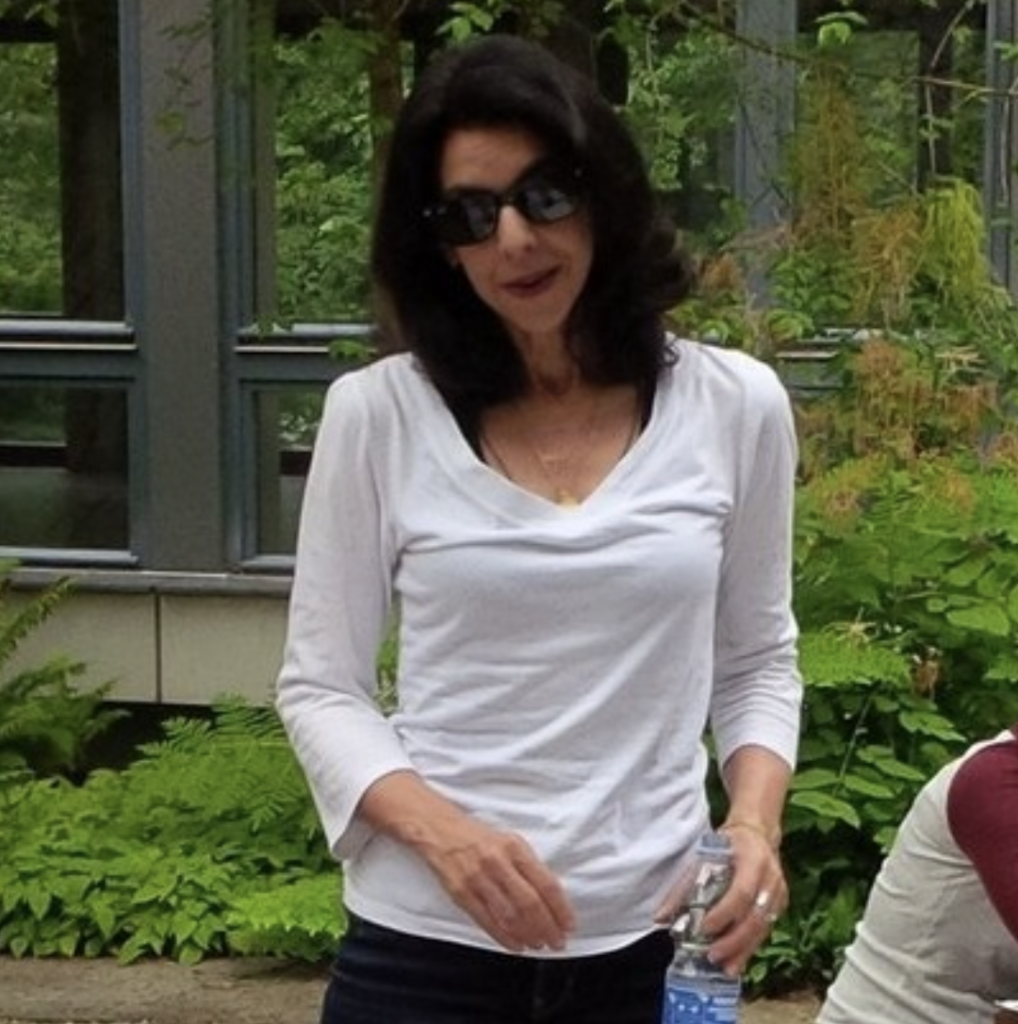
Zughaib’s work is a commentary on cultural identity, family life, the plight of refugees and displacement in the Middle East, the Arab Spring, and the Lebanese Civil War. Per her Wiki bio, Helen says she doesn’t view herself as a political artist: “I think of myself as somebody who’s talking about the people who end up paying the price for war. It’s women and children.” By political, Helen means not choosing sides, for example, in the Lebanese civil war, but in using her paintings involving conflict to show how human beings adapt in myriad ways and how they suffer. Her paintings reflect the moral issues generated by the seemingly perpetual conflict in the Middle East.
Zughaib’s work is known far and wide. The U.S. government has purchased her paintings to be given as gifts to foreign leaders. For example, in 2009, Secretary of State Hillary Clinton gave Moroccan King Mohamed V her interpretation of the Washington Monument during her trip to Morocco. In 2010, President Obama presented Iraqi Prime Minister Nouri al-Maliki with Zughaib’s painting “Midnight Prayers” during the Prime Minister’s visit to the White House. Helen’s work has been included in Art in Embassies’ State Department exhibitions abroad, including Brunei, Nicaragua, Mauritius, Iraq, Belgium, Lebanon, Saudi Arabia, and Sweden.
Sample of Zughaib’s paintings as commentary on life amidst Middle East strife and peace
Helen produced a notable series of 23 paintings titled “Stories My Father Told Me.” These are based on the folk tales and family history that her Lebanese father has told her over the years and include numerous stories of migration and displacement. Her father, who had become an American diplomat in the U.S. Department of State, had endless stories of growing up in Lebanon and Syria. Many of these are represented in Helen’s series, which was shown at the Arab American National Museum in Dearborn, Michigan in 2015.
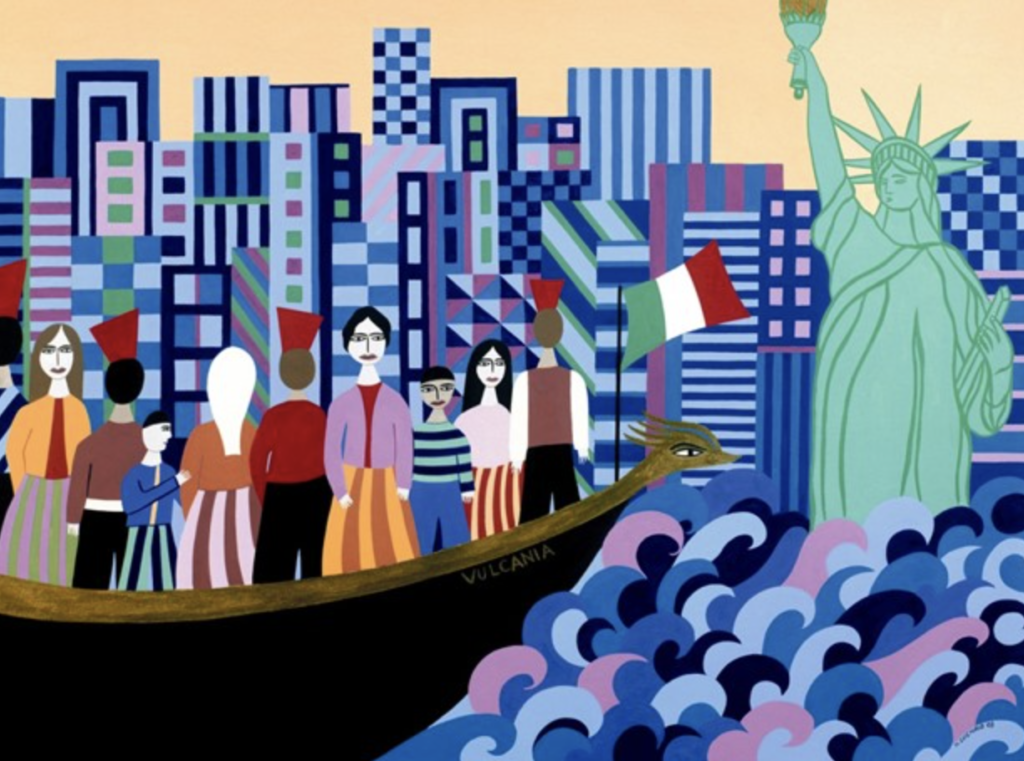
In “Coming to America,” a boat full of immigrants, including Zughaib’s father, approaches the shore of New York City. Lady Liberty greets them against a backdrop of skyscrapers stylized with inviting geometric patterns in soft blues and purples. “They stayed up all night because they heard they were going to see the Statue of Liberty,” she recalls her father telling her.
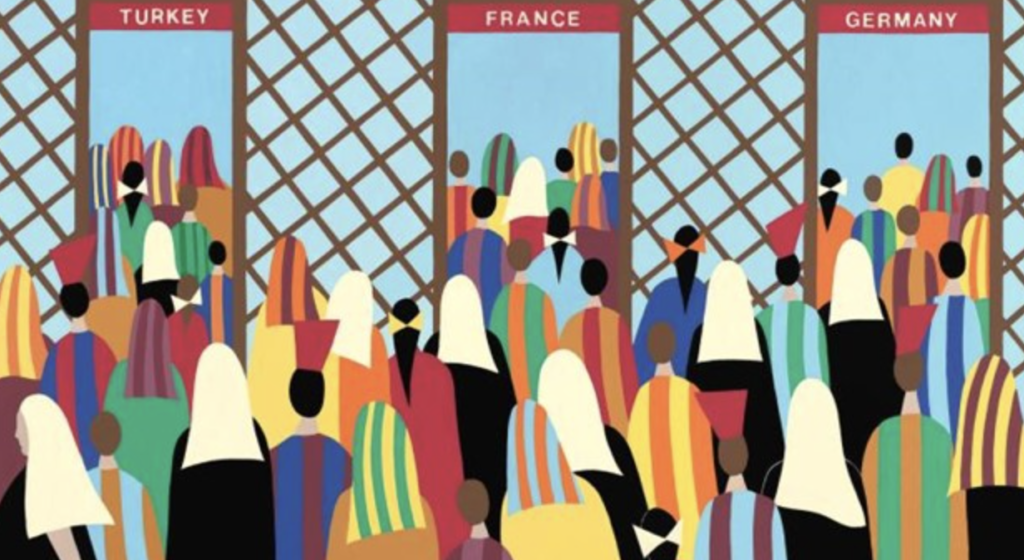
In the painting “Migration,” Zughaib illustrates the ongoing refugee catastrophe in the world today. “The vivid tones are present in the paintings, as usual; women and children are wearing colorful clothes, but the prevailing pattern on those clothes is striped, which resembles imprisonment and desperation.”
“Arab Spring” is yet another collection Helen created. It is a collection of gouache on-board pieces. She noted that Pablo Picasso inspired it. This collection is located in the U.S. Library of Congress. According to the artist, the collection “uses flowers and bright colors to display optimism and hope for equality.
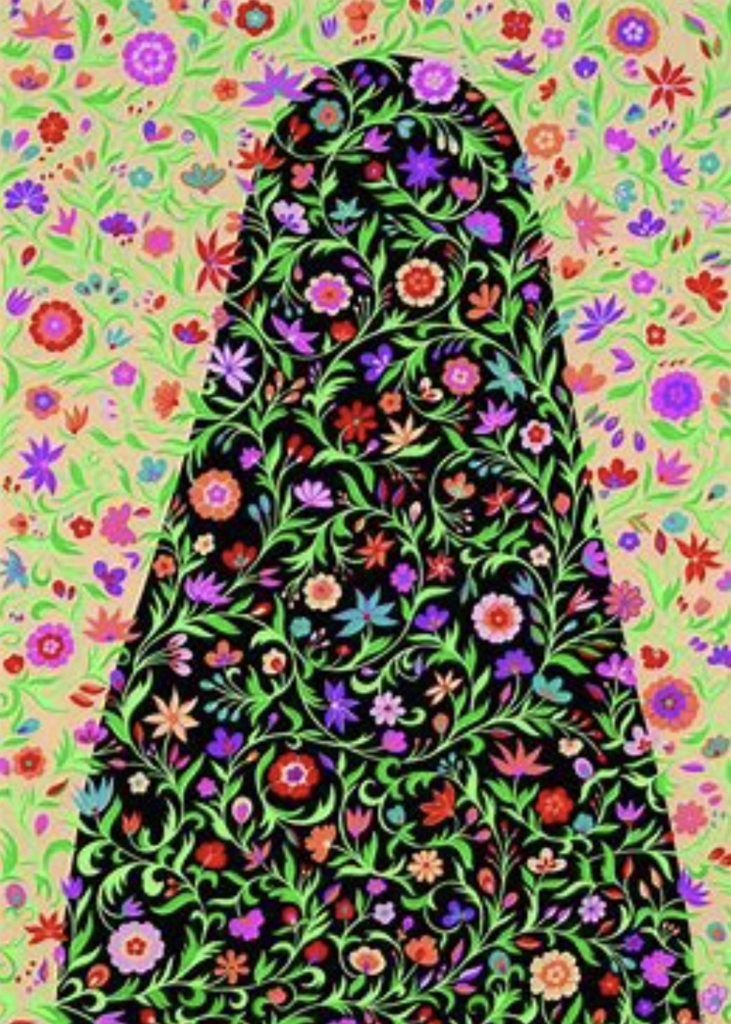
Helen noted in a Harvard Magazine interview that there are few men in her paintings: “Many pieces in her Arab Spring series display a single woman, represented by a silhouette of an abaya with flowers, Arabic words, or other patterns superimposed. She leaves it to viewers to determine the woman’s place in the Arab Spring (“Is she being swallowed up by that veil or is she emerging?”). In “Abaya Driving,” a woman in an abaya grips the wheel of a car—in some parts of the world, a provocative image. She stares at the viewer and leans intently forward as if rushing to leave.”
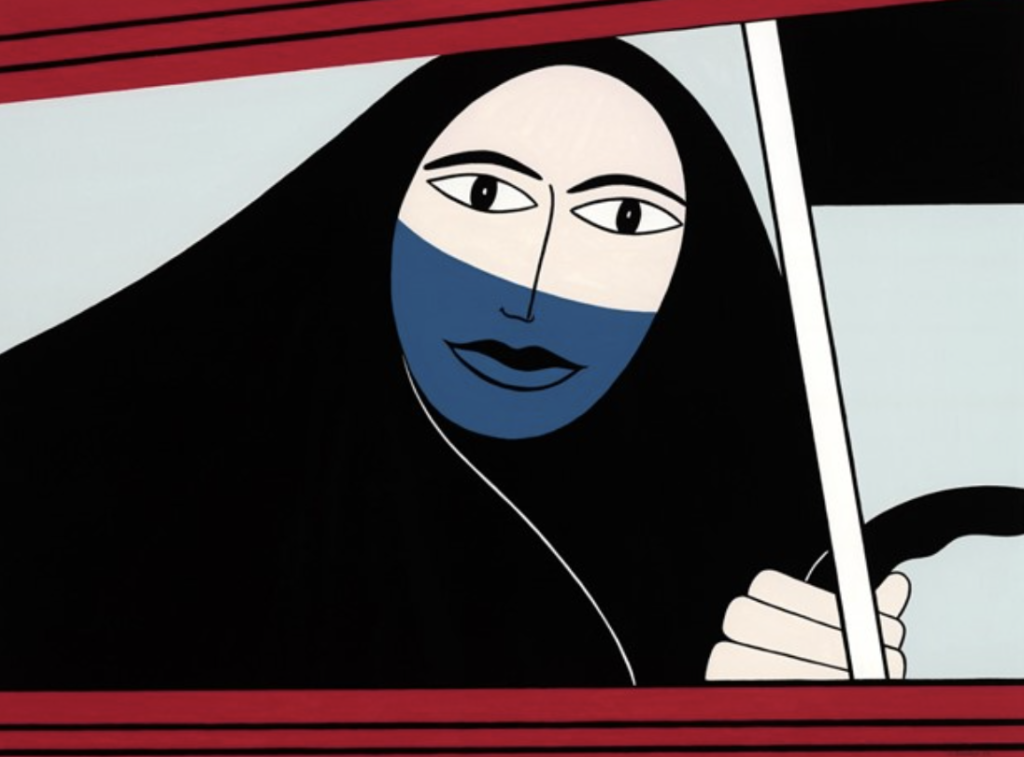
Helen’s “Re Imagined Peace” series was triggered by then Secretary of State John Kerry’s entry into a new round of Israeli-Palestinian peace talks. He asked Zughaib if she could produce a painting to present to the leaders of each side. “The resulting work, Re Imagined Peace, depicts a cityscape of domed buildings and minarets in bright colors, painted over with geometric and floral patterns. There are no humans, only the vaguely Middle Eastern-looking city at peace in a stylized future. She and the diplomats worked on different schedules. By the time she finished the piece two months later, it was too late—the peace talks had already fallen apart.”
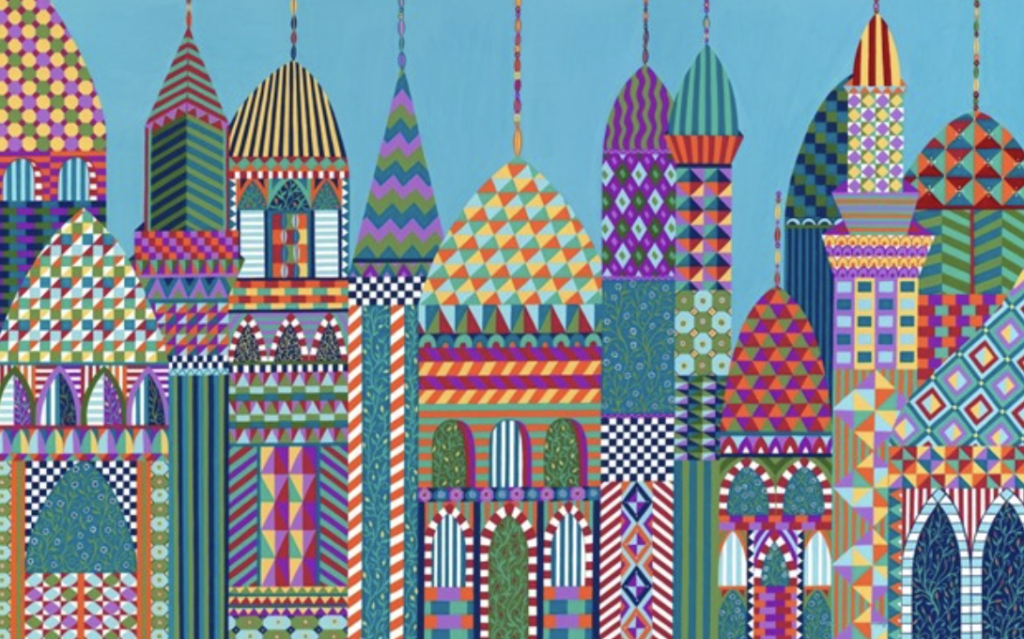
Helen is deeply concerned with the humanitarian impact of her work, “but the tone of her paintings might seem to belie the full weight of the refugee crisis. She’s more interested in showing the quiet dignity of her subjects, as well as the traditions and ways of life that they bring with them. This is part of her larger project to promote positive images of Arabs and Arab countries—she does so not by ignoring the ugly crises affecting the Middle East, but by drawing out of them the beauty of everyday life.”
We end by quoting Helen directly on the intended impact of her inspiring works of art:
“As an Arab American, I hope, through my work, to encourage dialogue and bring understanding and acceptance between the people of the Arab world and the West, especially since 9/11, our wars in Iraq and Afghanistan, and the more recent revolutions and crises in the Arab world, resulting from the “Arab Spring” that began in late 2010, leading to the current war in Syria and the massive displacement of people seeking refuge in Europe, the Middle East, and America.
My work is ultimately about creating empathy and creating a shared space for introspection and dialogue. I ask the viewer to see through someone else’s eyes, to walk in another’s shoes. To accept the “other.” To reject divisiveness. To promote acceptance and understanding and to reject violence and subjugation of anyone anywhere. To give voice to the voiceless, to heal, to reflect in our shared humanity.” – Helen Zughaib.
Sources:
– “Helen Zughaib,” Wikipedia Biographies of Arab Americans, 2024
–“The Everyday Dignity of Helen Zughaib’s Refugees: The Lebanese-American painter depicts people who pay the price of war,” Harvard Magazine, 2/9/2017
–“The Repercussions of the Arab Spring in Helen Zughaib’s Art,” by Emiliya Strahilova Arab America, 4/4/2018
–Stories My Father Told Me, The Show Box (Sanduk al-Firji) by Helen Zughaib, 2016
–“Helen Zughaib,” Social Practice Residency. Kennedy Center for the Performing Arts (2021-2023)
John Mason, Ph.D., focuses on Arab culture, society, and history and is the author of LEFT-HANDED IN AN ISLAMIC WORLD: An Anthropologist’s Journey into the Middle East, New Academia Publishing, 2017. He has taught at the University of Libya, Benghazi, Rennselaer Polytechnic Institute in New York, and the American University in Cairo; John served with the United Nations in Tripoli, Libya, and consulted extensively on socioeconomic and political development for USAID and the World Bank in 65 countries.
The views and opinions expressed in this article are those of the author and do not necessarily reflect the position of Arab America. The reproduction of this article is permissible with proper credit to Arab America and the author.
Check out our Blog here!



